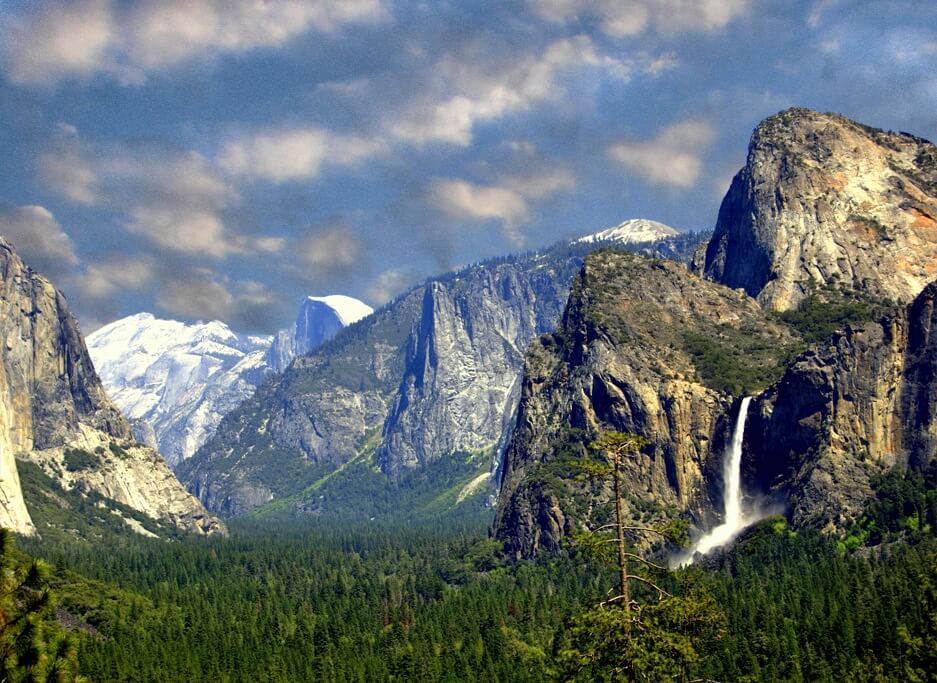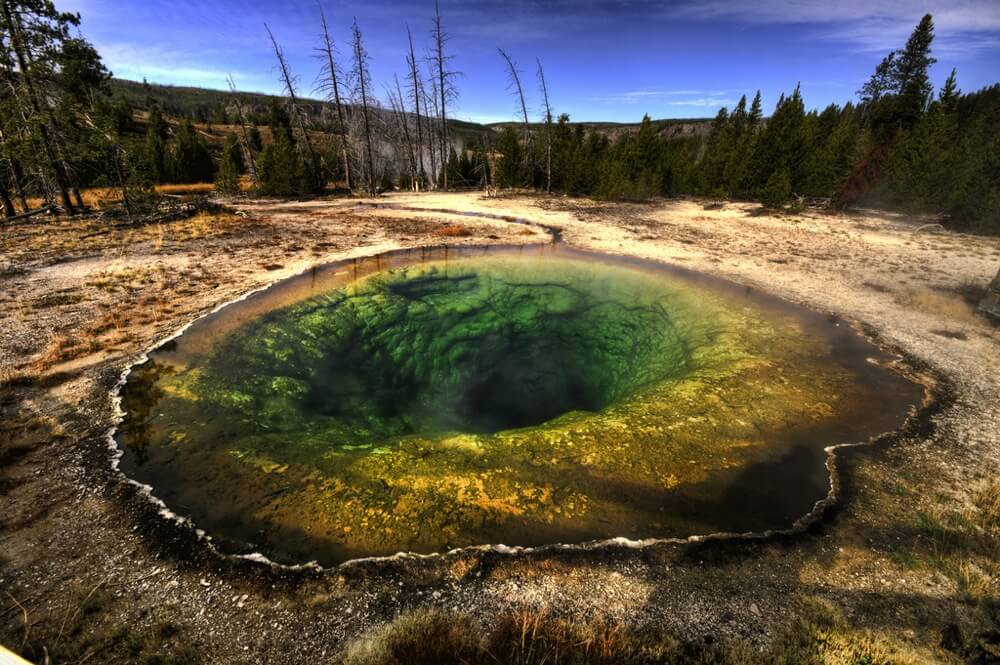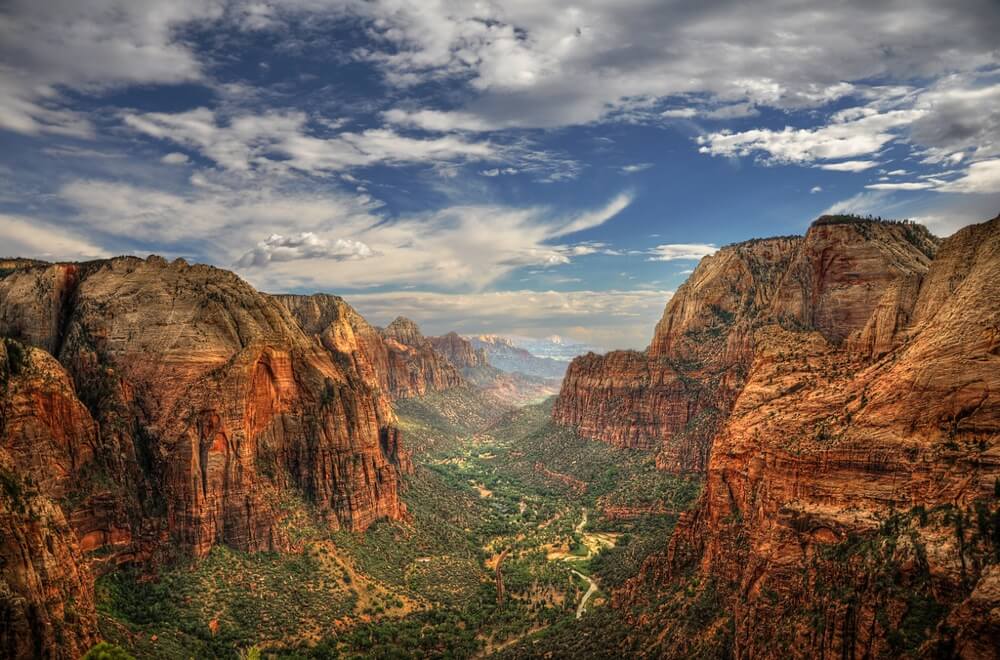National parks provide some of the most iconic views and beautiful landscapes. As a result, the parks are a tremendous resource for photographers as well as tourists. But with so many parks it can be quite difficult to choose which ones you want to visit.
In the following list, we’ve put together seven of our favorite U.S. national parks for landscape photography. Keep in mind that there are plenty of other great national parks as well. The National Parks Service offers a wealth of destinations for photographers. This list is just a starting point!
Beautiful U.S. National Parks for Landscape Photography
Yosemite National Park
Photographers like Ansel Adams have made Yosemite an extremely popular destination for landscape photographers, as well as tourists. The park is located in California, about a 3-hour drive from San Francisco. It covers more than 1,100 square miles, including a stretch of the Sierra Nevada mountain chain.
Yosemite is home to iconic landmarks like Half Dome, El Capitan, Yosemite Falls, and Bridalveil Fall. Spots like Tunnel View Lookout have been visited by countless photographers. But Yosemite is more than just a collection of popular spots for photographers. There are amazing opportunities for hiking to get beautiful views and unique photos. The park is full of natural beauty that is worth capturing. Things like the giant sequoia trees of Mariposa Grove or the spring flowers along the banks of the Merced River and Mono Lake are just a few of the possibilities.
Check out our list of Yosemite National Park photography locations and look through these stunning Yosemite Valley photos for more ideas and inspiration.
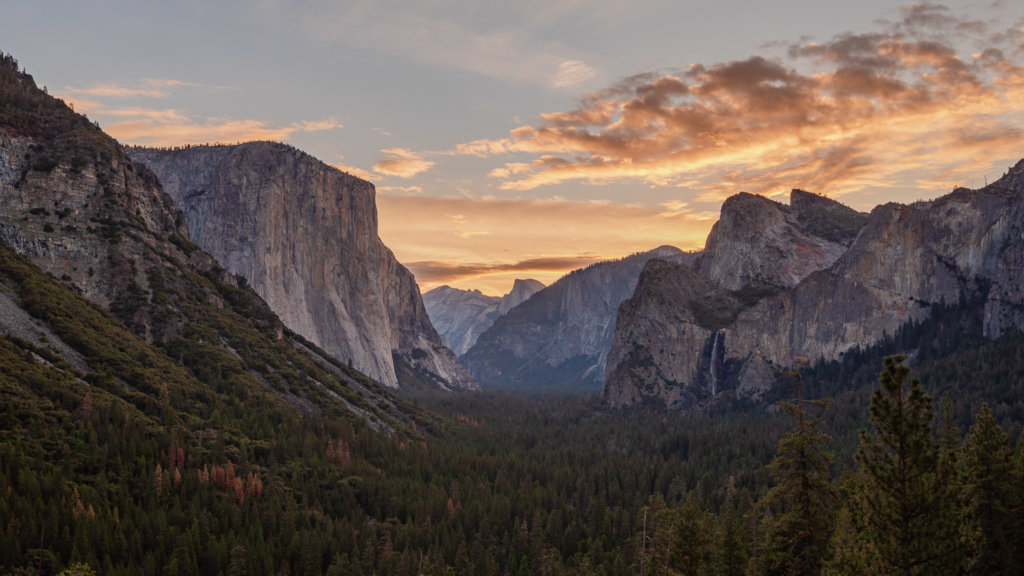
The image above is post produced using our new Landscape Lightroom Presets. You might also be interested in seeing these engagement photos at Yosemite National Park.
Grand Canyon National Park
Arizona’s Grand Canyon is a popular destination that you really need to see to believe. A popular park that draws visitors from all around the world, Grand Canyon National Park offers plenty of opportunities for landscape photographers. There are many easy-to-access viewpoints, several other worthy viewpoints that are more difficult to access, and loads of space to explore on foot.
The Grand Canyon is one of the most recognizable landmarks in the world. With the huge size of the canyon and all of the different viewpoints and trials, there are countless possibilities to capture amazing photos of your own.
The most popular spot for visitors is the south rim, which is open year-round. Though it’s crowded in some places, there are plenty of opportunities for getting away from tourists, who stick primarily to the most popular and easy-to-access viewpoints.
The American southwest is full of beautiful landscapes, and the Grand Canyon is right at the top of that list. Great spots for photographers include Horseshoe Bend, Cape Royal, Toroweap, and many viewpoints along Desert View Drive and Hermit Road. In addition, the Grand Canyon is relatively close to several other great spots like Sedona, Zion National Park, Lake Powell, and Antelope Canyon.
For more inspiration, check out these incredible Grand Canyon lightning photos, plus these beautiful Havasu Falls photos in the Grand Canyon. You might also be interested in seeing some engagement or pre wedding photos at Grand Canyon National Park.
John Fowler – Toroweap Sunrise
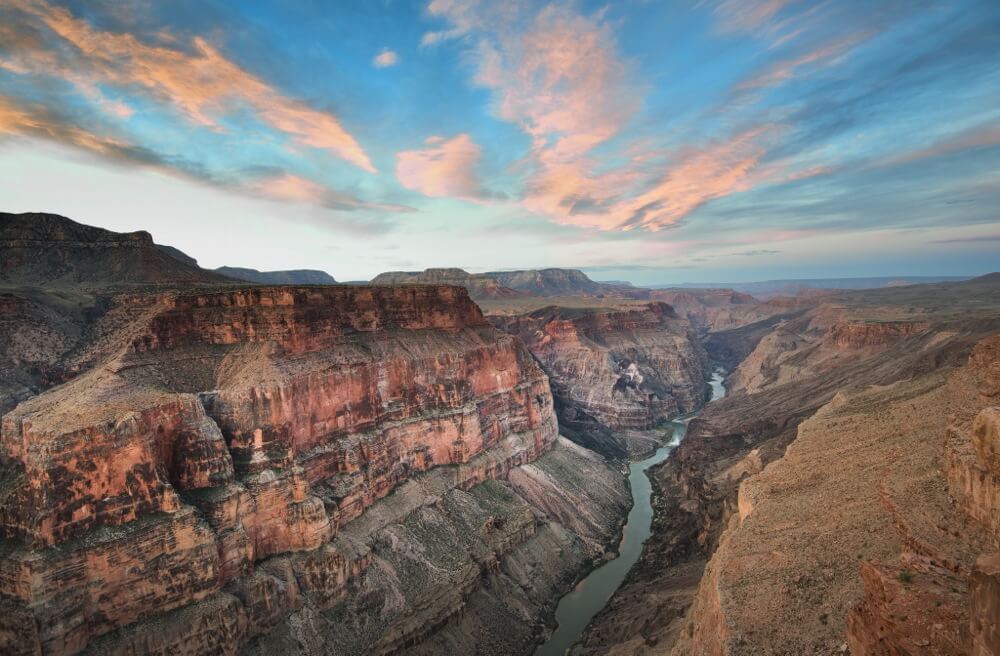
Yellowstone National Park
America’s first national park is still one of the gems of the National Parks Service. Yellowstone is mostly located in Wyoming, but also reaches into Montana and Idaho. The park is an amazing destination for both landscapes and wildlife, including grizzly bears, elk, bison, and wolves.
Geothermal features like the Old Faithful Geyser and Grand Prismatic Spring provide photographers with opportunities that can’t be found anywhere else. More than half of the world’s geysers are located within Yellowstone National Park. The park also has beautiful lakes, rivers, mountains, plateaus, waterfalls, and canyons that are waiting to be photographed.
The combination of beautiful landscapes, abundant wildlife, and amazing geysers make Yellowstone one-of-a-kind, beautiful in any season (although some areas are difficult to reach in winter). For photo ideas, visit this geotagged map of Yellowstone’s best photography spots from The Luminous Landscape.
Great Smoky Mountains National Park
Great Smoky Mountains National Park is the most visited national park in the United States. It’s located in Tennessee and North Carolina, the only park east of the Mississippi in this list. The park features mountains (of course), wildlife, waterfalls, large rivers, and small streams.
Great Smoky Mountains National Park is a great place to photograph in any season. Spring is great because of the wildflowers and rushing waters. In summer, everything is easy to access. Fall offers stunning colors (the Smoky Mountains are one our top 10 destinations for autumn photography). And winter provides opportunities to capture beautiful snow-covered scenes.
Some roads within the park are closed during winter months, but the majority of the park is accessible year-round. Popular spots for photography include Cade’s Cove, Clingman’s Dome, many viewpoints along Newfound Gap Road, and several waterfalls that can be reached by hiking trails.
The trails provide the best photo opportunities, since many of the most scenic spots in the park cannot be reached by car. These trail views are also less crowded, as most of the park’s visitors never wander beyond the easy-to-access viewpoints.
Gary Millar – Waiting for sunrise Foothills Parkway
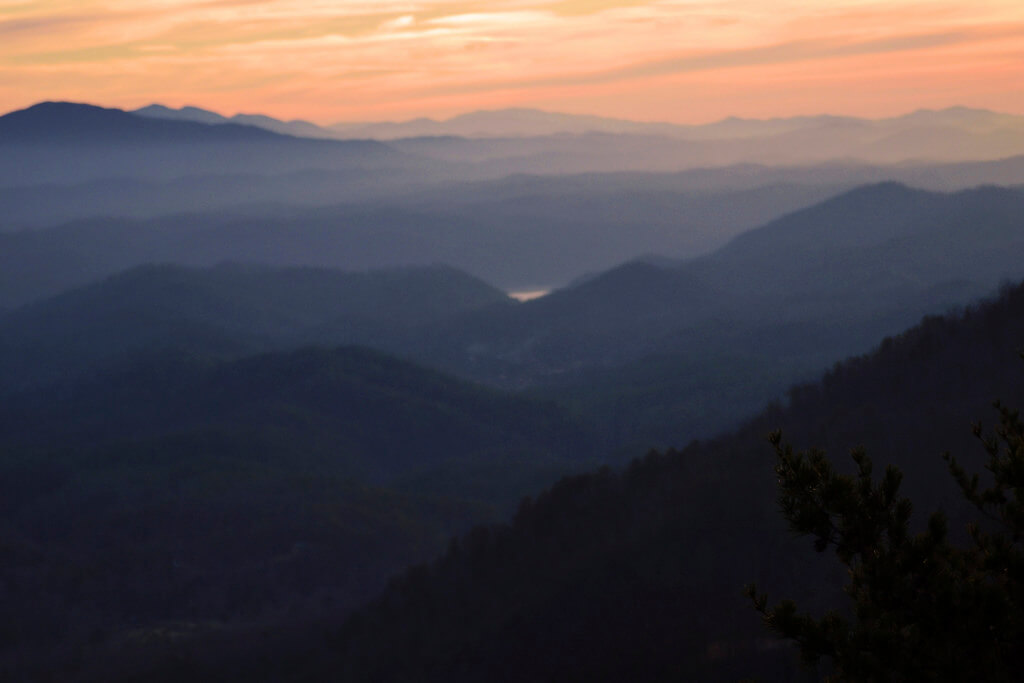
Glacier National Park
Glacier National Park is located in Montana and stretches to the Canadian border. (Waterton Lakes National Park is just on the other side of the border.) Glacier includes more than one million acres filled with beautiful landscapes and wildlife. Don’t let the name fool you – the park is much more than snow and ice.
Glacier National Park is home to mountains, hundreds of lakes, waterfalls, beautiful spring wildflowers, and plenty of wildlife. Take “Going to the Sun Road” for a 50-mile tour that provides some of the best views in the park. (Warning: this is a winding road with steep cliffs just off the side of the road). There are also plenty of trails and hiking opportunities that will lead to great photographs. You may even spot a moose or a bear.
Photographer Mike Mikkelson has a very helpful guide to the park – The Photographers Guide for First Time Visitors to Glacier National Park. If you’re hoping to see glaciers at the park, plan your visit sooner rather than later! The park’s glaciers have been melting and disappearing due to climate change, as you can see in these satellite photos from NASA.
Diana Robinson – Night Over Bowman Lake
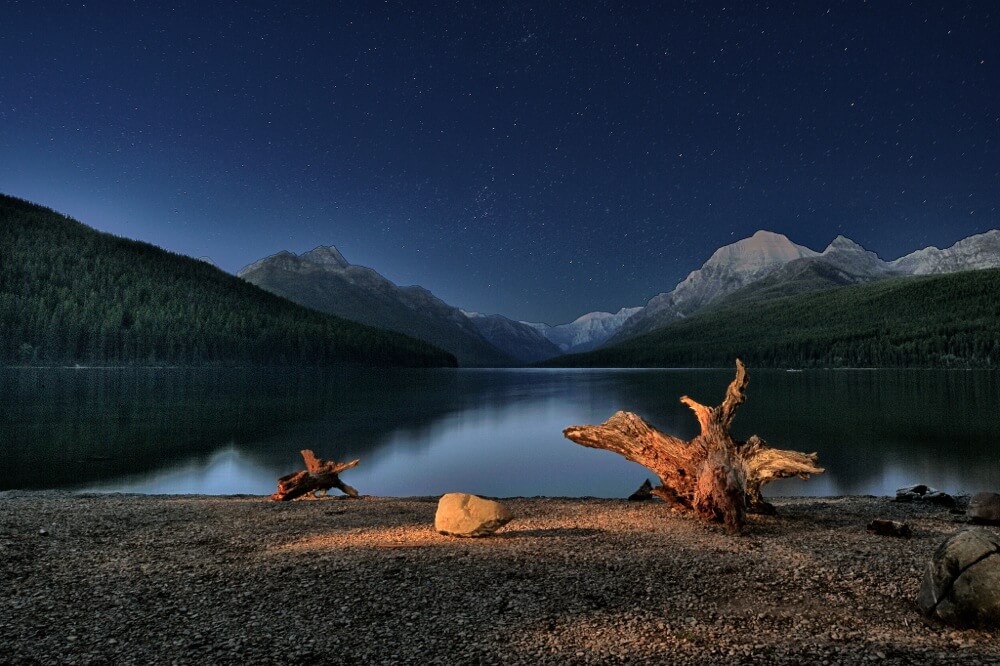
Zion National Park
Though relatively small compared to other national parks, Zion National Park is one of Utah’s amazing treasures. The park is over 200 square miles in total, but the vast majority of visitors stay within the Zion Canyon area, which is 15 miles long.
Zion is located within a few hours drive of the Grand Canyon, Las Vegas, and Bryce Canyon National Park. Because of its close proximity to other parks, many visitors hit Zion and a few other parks on the same trip.
Zion is a beautiful place that has an otherworldly feel when you arrive after driving through the desert. The park is home to many impressive rock formations, slot canyons, and the beautiful Virgin River.
Formations like The Watchman, The Great White Throne, and The Three Patriarchs are the subjects of many gorgeous photos. Views from Angel’s Landing and the Canyon Overlook Trail allow you to capture the beauty of the canyon. Hikes like The Narrows (hiking in the Virgin River through the narrow canyon) are challenging but amazing.
For help planning your trip, read through the Zion National Park photography guide from Loaded Landscapes.
Olympic National Park
Olympic National Park is unique because it includes several different ecosystems. Located on the Olympic Peninsula of Washington, the park features a beautiful stretch of Pacific Coast. In addition to the coast, the park includes mountains, glaciers, temperate rainforest, and drier forests.
Olympic National Park is home to Mount Olympus, 11 major rivers, lakes, waterfalls, and flower-filled meadows. The rainforest includes old-growth trees more than 200 feet tall. From Hurricane Ridge, you can catch a great view of Mount Olympus. Of course, the coast is extremely popular with photographers.
Seattle Met has a thorough insider’s guide to Olympic National Park with all the best places to hike, see, and stay during your visit.
Bala Sivakumar – Lake Crescent

